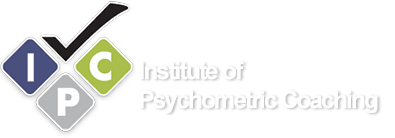Preparation for ACER’s Abstract reasoning, Verbal Reasoning & Quantitative Reasoning tests - Examples & Practice
Find out how the Institute of Psychometric Coaching effectively prepares you for your aptitude, psychometric and personality tests with ACER:
- Tailored practice tests online for ACER’s special abstract, verbal and numerical test questions
- Many timed tests with real test questions
- Step by step answer explanations to all test questions
- Test scores with scores relative to others
- Guidance on how to improve
- Online tests’ courses
- Personal Tutoring for ACER’s tests delivered by experienced Psychometricians
About ACER
The Australian Council for Educational Research offers a wider range of psychometric assessments for schools, higher education and work places. It is one of the more established Australian providers of psychometric tests.
ACER’s Reasoning and Aptitude Tests
Acer offers a wide range of aptitude tests such as verbal and numerical critical reasoning, Vocational selection tests that include abstract reasoning, verbal reasoning and quantitative reasoning tests and lower level verbal and numerical reasoning test.
ACER’s Aptitude or Reasoning Tests:
These tests assess your cognitive abilities in relation to employment and to occupational needs. This test set includes:
- ACER Verbal reasoning test
- ACER Abstract Reasoning
- ACER Quantitative Reasoning
ACER Verbal reasoning test
This section of the test measures your ability to understand concepts represented in words and your ability to read simple test. There are 3 types of verbal reasoning test questions in ACER’s test:
Type 1 – ‘List of statements’ test questions
With this type of verbal reasoning test question, ACER will offer you questions that include a list of statements or facts. You will then be asked if one or more of the statements ‘prove’ or ‘disprove’ the conclusion in the test question.
Example for type 1 - ACER’s verbal reasoning test question:
Which two statements together prove that boys are not girls?
A. all boys have an earring in one eyebrow
B. girls don’t like boys
C. boys don’t like girls
D. if you have an earring, you are not a girl
E. if you are not a girl, you must have an earring
If you combine the first statement that ‘all boys have an earring in one eyebrow’ with the fourth statement, ‘if you have an earring, you are not a girl’, you will get: ‘all boys have an earring, and they are not girls’.
As you can see, this is factual nonsense, but you are not being asked about reality: only whether you can identify if specific statements (right, wrong or indifferent) support a particular statement (however silly). Your ability to apply logic is being tested, not your grip on reality. Therefore, the correct answer is A and D.
Type 2 – ‘Word list’ and ‘odd-one-out’ test questions
In this type of verbal reasoning test questions, ACER will give you test questions with a list of words. You will then be asked to choose which of the list words do not have the same meaning as the others – that is, which is the ‘odd one out’?
Let’s review the following example for type 2 ACER’s verbal reasoning test questions:
Four of the following five options are alike in some way – select the one that is not.
A. to acquit
B. to esteem
C. to exculpate
D. to exonerate
E. to vindicate
Most words in this list have a common theme: ‘to acquit’, ‘to exculpate’, ‘to exonerate’, and ‘to vindicate’ are all verbs that relate to being found or declared not guilty, or free from blame. However, ‘to esteem’ means to respect and admire and has a different meaning to the rest. This is the odd one out.
Type 3 – ‘Word association’ test questions
In this type of ACER’s verbal reasoning test questions, you are given a pair of words that are related in some way – and this pair is followed by a single word and a list of options. You will be asked to determine a similar association for the single word from the list of options.
Let’s look at an example for type 3 ACER verbal reasoning test question:
Cane is to walk, as Eyeglasses are to …
A. Taste
B. Hear
C. Colour
D. Run
E. Observe
F. Sun
The association between ‘cane’ and ‘walk’ is that the cane is an ancillary instrument to assist someone to walk. Therefore, we need to find a word in the list with a similar association to ‘eyeglasses’. ‘Eyeglasses’ are an ancillary instrument to help someone ‘observe’, so this forms the same relationship as exists between ‘cane’ and ‘walk’.
ACER’s abstract reasoning test
ACER’s abstract reasoning test measures your ability to identify patterns, understand the bigger picture, think strategically and solve problems. Each ACER’s abstract reasoning test question includes a groups of shapes that have some things in common and one missing shape. The missing shape can be at the end or in the middle or at the beginning. You are asked to find the missing shape and select the correct answer from a list of answer options.
Let’s review an example of an ACER abstract reasoning test question:
Which one of the following shapes best completes the series?

To answer this question we need to find what patterns can be identified in this group of shapes going from left to right. In this group, we have an outer square containing one of three shapes (circle, square and triangle) and a number of lines across the corners of the square. There are two underlying patterns to this series. The first pattern is that the three inner shapes always repeat in the same order. The second pattern is more complicated, as we need to count the lines. Given that the missing shape is in the middle, we best to start from the shapes after the missing shape. In the first shape (left to the missing shape) we have 2 lines across the top left corner and one line across the other corners. In the next shape there is no change in the lines. In the next shape we see a drop of one line from the top left corner. Then in the following shape we see another line drops. This time from the bottom left corner. In the next shape there is no change in the number of lines. This means that the pattern is one line drops from the first shape. Then in the next shape another line drops. Then there is a pause in the next shape. Then the pattern repeats. Therefore, shape D is the correct answer.
ACER’s Quantitative (or Numerical) Reasoning test
ACER’s quantitative reasoning test measures your ability to understand numerical information and work with numbers. ACER’s quantitative reasoning test questions typically include short written text that includes some numerical information. You are asked to calculate the correct answer and select it from a list of answer options.
Example of ACER’s Quantitative test question:
Please read the following question:
Emma worked 4 times as long as Sharon; and Anne worked for one-third as long as Sharon. If Emma worked for 24 hours, how long did Anne work?
Brian = Emma, Tracy=Sharon, Bill=Anne
How to answer this question
There are many ways to approach such a test question. You might wish to solve it intuitively, but if you are not someone for whom intuitive answers come in to mind, then we would suggest converting the text in the question to an equation in the following way:
From the first sentence of the question you can come up with the following two equations:
Equation 1: Emma = Sharon x 4
Equation 2: Sharon = Anne x 3
The two equations include 3 unknown variables: Emma, Anne and Sharon (each variable represents the number of hours each person worked). Then, based on the last sentence in the question we can conclude that Emma = 24. Using this fact, we can plug in Emma’s number of hours worked into Equation 1 to find that Sharon worked: 24 / 4 = 6 hours. Then, we can plug Sharon’s number of hours worked into Equation 2, and we will find that Anne worked: 6 / 3 = 2 hours.
Take our customised preparations for ACER’s Abstract reasoning test, verbal reasoning test and Quantitative (numerical) reasoning test.
ACER’s Vocational Selection Test
ACER’s VST is another set of selection tests that includes a Verbal Reasoning test section, a Quantitative (or Numerical) Reasoning test section and AN Abstract reasoning test section.
ACER’s VST Verbal reasoning test section
In ACER’s verbal reasoning test section (in VST) you will find two types of test questions:
Type 1 – ACER’s verbal comprehension test questions:
In verbal comprehension test questions you will be given a short passage of text and you will be asked a question relating to the text. Your task is to decide what the correct answer out of 4 answer options is. This should be solely based on the passage.
Topics for the passages generally include material from general work issues, social sciences, physical or biological sciences, and business-related areas (marketing, economics, human resource management, etc.). Because these passages originate from widely divergent content areas, you might be familiar with some of the material – however, no specific knowledge of the material is required.
Let’s review an example for type 1 – ACER verbal reasoning test question (in VST):
Read the following passage:
In epistemology, the Munchausen trilemma is a thought experiment used to demonstrate the impossibility of proving any truth, even in the fields of logic and mathematics. If it is asked how any knowledge is known to be true, proof may be provided. Yet that same question can be asked of the proof, and any subsequent proof. The Munchausen trilemma is that there are only three options when providing proof in this situation: (a) the circular argument, in which theory and proof support each other; (b) the regressive argument, in which each proof requires a further proof, ad infinitum; and (c) the axiomatic argument, which rests on accepted precepts. The trilemma, then, is the decision among the three equally unsatisfying options.
The name Munchausen Trilemma was coined in 1968 by the German philosopher Hans Albert in reference to a trilemma of “dogmatism versus infinite regress versus psychologism” used by Karl Popper. It is a reference to the problem of ‘bootstrapping’, based on the story of Baron Munchausen pulling himself and the horse on which he was sitting out of a mire by his own hair.
Answer the following question:
Which one of the following does NOT follow based on the content of the text?
a. Karl Popper was a German philosopher.
b. There are three argument options when providing proof of whether any knowledge is true.
c. The axiomatic argument is one which rests on accepted precepts.
d. When each proof requires further proof ad infinitum, it is called a regressive argument.
e. Baron Munchausen rode a horse.
To answer this question, we need to quickly read the passage. From a quick read we can conclude that nowhere in the text does it mention Karl Popper’s origins. The text only says that Hans Albert was a German philosopher. Therefore, the correct answer is a.
Type 2 – ACER verbal reasoning test questions
In this type of verbal test question, each verbal test question includes information presented in a table or a graph and question based on the information presented. To answer the questions you don’t need to do any calculations. You only need to understand the information presented.
Let’s look at the following example of type 2 – ACER verbal reasoning test:

When the Queen bee is 50 meters away from the hive, the distance of the Black bee from the hive is:
- At least 30 meters
- At least 20 meters
- 50 meters
- At least 50 meters
To answer this question, we need to first review the graph to check what happens when the Queen bee is 50 meters away from the hive. The X axis shows us how far the Queen bee is from the hive and the Y axis shows us how far the Orange and Black bees are from the hive. So we need to find the mark of 50 on the X axis and then take an imaginary vertical line up to check what is the maximum distance of the Black bee from the hive. In this case we can see that the Black bee is between 30 and 50 meters away from the hive. Therefore, the answer ‘at least 30 meters away from the hive’ is the correct one.
ACER’s VST Quantitative (numerical) reasoning test section
In ACER’s VST Quantitative reasoning test section you will find sets of test questions that require you to analyse numerical information presented in tables and graphs. You will need to master basic calculations such as average, multiplying numbers, percentages and ratios.
Let’s review the following example for an ACER Quantitative reasoning test question:

Assuming you purchased a Premium package for three months, and then switched to the Basic account for a further six months, how many hours of free viewing could you have?
a. 150
b. 72
c. 90
d. 45
e. 108
To answer this test question we need to review the two tables. Based on the first table we can learn that when you purchased a Premium package for 3 months, you also received 18 free viewing hours per month. This means 18 x 3 = 54 free hours. Then you switched to the Basic package for another 6 months. This offered you 6 free hours per month. This means 6 x 6 = 36 free hours. Therefore, the total number of free hours was 54 + 36 = 90 hours. Therefore, C is the correct answer.
ACER’s VST Abstract reasoning test section:
This section includes similar test questions to ACER’s generic abstract reasoning test.
Let’s review an example of an ACER abstract reasoning test question:
Which one of the following shapes best completes the series?

To answer this question we need to find what patterns can be identified in this group of shapes going from left to right. In this group, we have an outer square containing one of three shapes (circle, square and triangle) and a number of lines across the corners of the square. There are two underlying patterns to this series. The first pattern is that the three inner shapes always repeat in the same order. The second pattern is more complicated, as we need to count the lines. Given that the missing shape is in the middle, we best to start from the shapes after the missing shape. In the first shape (left to the missing shape) we have 2 lines across the top left corner and one line across the other corners. In the next shape there is no change in the lines. In the next shape we see a drop of one line from the top left corner. Then in the following shape we see another line drops. This time from the bottom left corner. In the next shape there is no change in the number of lines. This means that the pattern is one line drops from the first shape. Then in the next shape another line drops. Then there is a pause in the next shape. Then the pattern repeats. Therefore, shape D is the correct answer.
Which companies use ACER’s Reasoning and Aptitude tests?
ACER is a leading psychometric test developer in Australia and has a long list of client such as Federal and State police, Fire brigade in some states such as Victoria and others.
Please note that most companies tend to have more than one psychometric test provider.
How our Institute prepares you for ACER’s reasoning tests:
The institute offers several tailored preparation packages for those who need to prepare for ACER’s reasoning tests:
Professional Practice Reasoning tests tailored to ACER. These tests include:
- A large pool of timed tests with real test questions mimicking ACER’s reasoning tests
- Step by step simple answer explanations for all test questions.
- Test scores given in comparison to others so you know how well you performed.
- Detailed feedback about your performance on each test.
- Immediate Access.
Personal Tutoring delivered face to face or via Teams video:
- Delivered by Experienced Australian Psychologists & Psychometricians.
- Includes an analysis of your weaknesses
- Guiding you step by step on how to improve your scores
- Working with you to ensure you know how to solve all ACER’s reasoning test questions.
- Immediate Access
Start your preparation Now.









